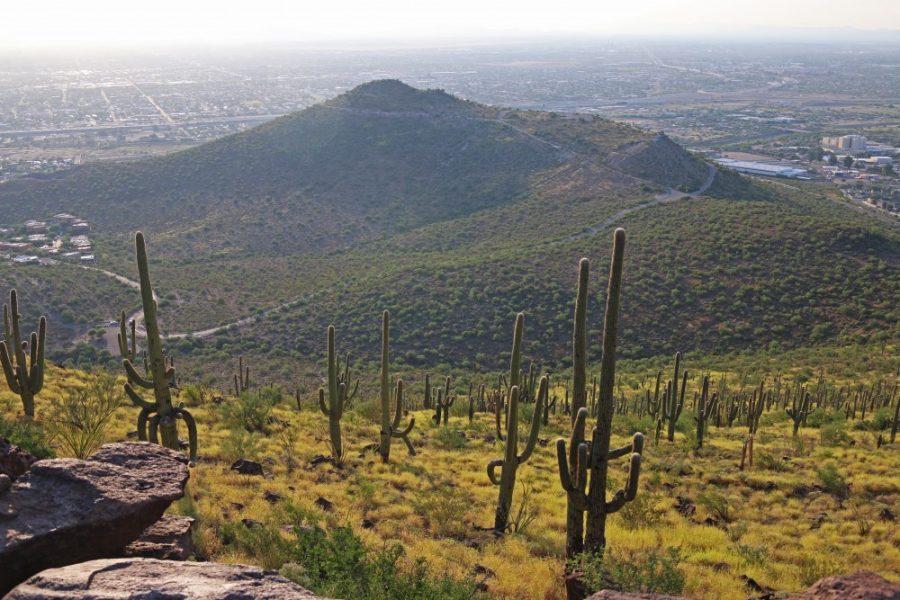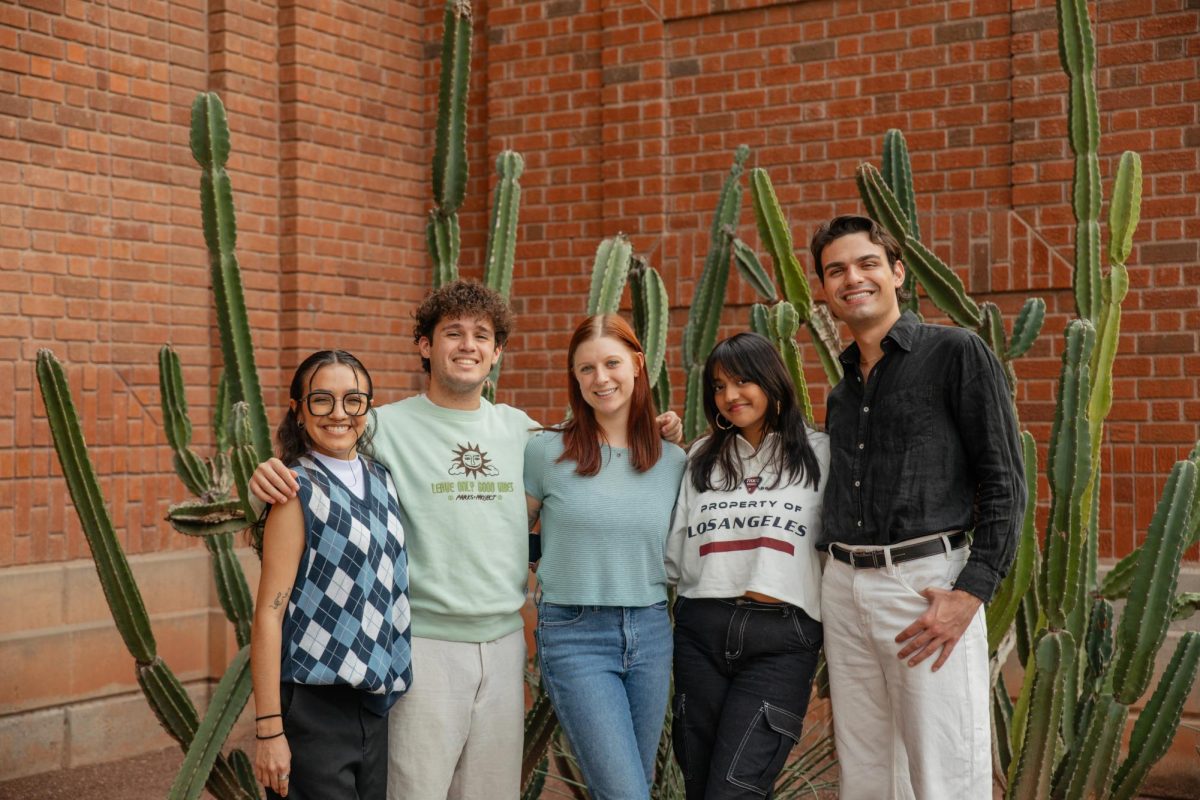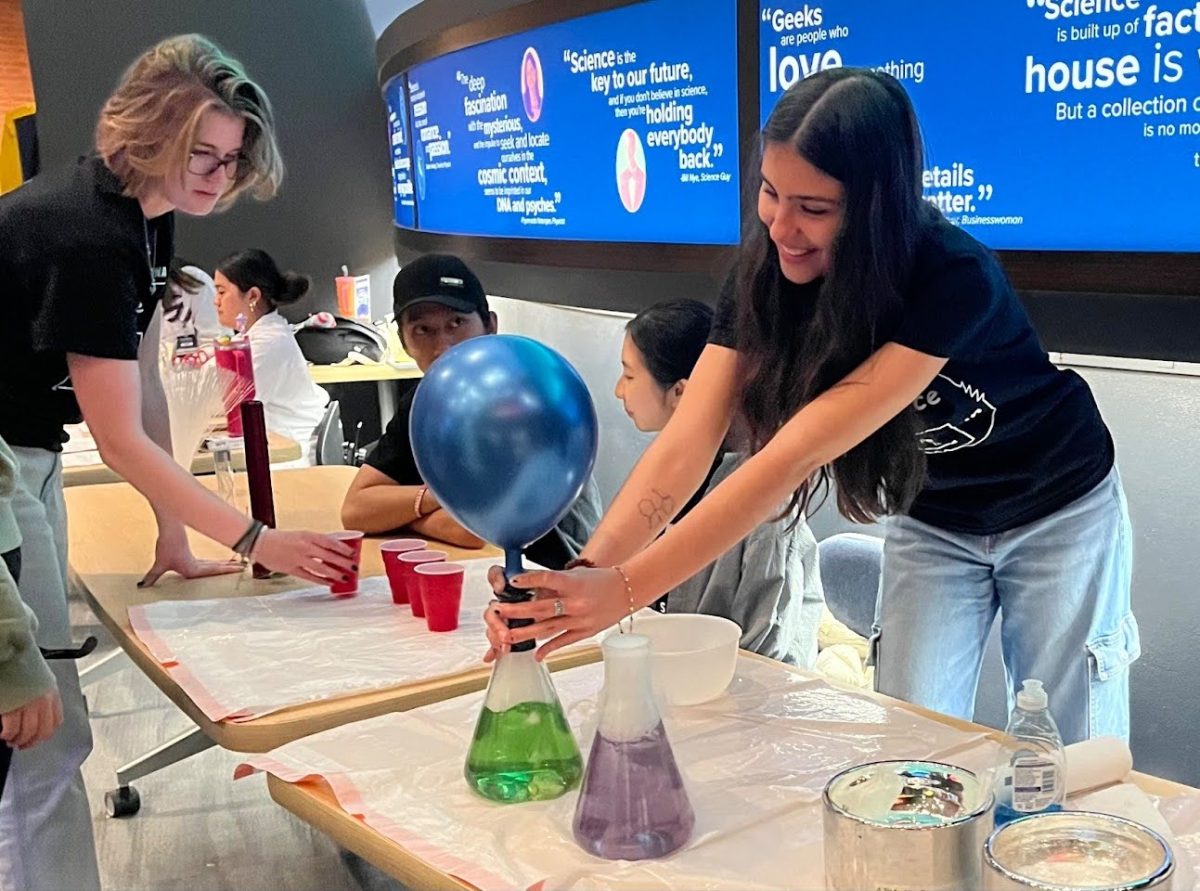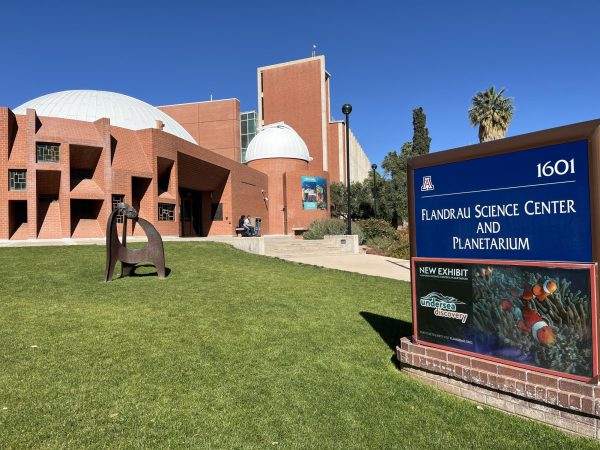A recent schedule change and the creation of several community outreach endeavors has ushered in a new era for the Desert Laboratory at Tumamoc Hill.
This historic ecological preserve on Tucson’s west side has tantalized Tucsonans for thousands of years. It is the focal point in the Tucson valley landscape, and it has many stories to tell.
For some, however, it has only been a hiking destination. There was a common disregard for the scientific and cultural importance of Tumamoc, according to Ben Wilder, director of the Desert Laboratory at Tumamoc Hill. It was common for visitors to come outside of the schedule — restrictions that were difficult to enforce.
 “A lot of people didn’t realize that they were breaking a rule,” Wilder said.
“A lot of people didn’t realize that they were breaking a rule,” Wilder said.
Now with the help of the University of Arizona Police Department, Tumamoc has established a new, more community-friendly schedule: 4 a.m. to 10 p.m. This, along with the launch of a new app, Tumamoc Tour, brings hope of renewing the bond between Tumamoc and the people of the Tucson Valley, Wilder said.
That bond goes back thousands of years. According to Wilder, there is concrete evidence of corn found near downtown Tucson dated over 11,000 years ago.
“At the base of Tumamoc, just near where the mission gardens are, there’s dates of about a 4,000-year-old settlement,” Wilder said. “So that 4,000-year settlement makes Tucson and the territory right next to Tumamoc the longest continuously habited site in the United States.”
That evidence was at the forefront of the recent United Nations Educational, Scientific and Cultural Organization designation of Tucson as an International City of Gastronomy, the first and only city in the U.S. to have such a designation.
“We have over 2,500 to 4,000 years of continuous use and then about 115 years of science,” Wilder said. “So science is a relatively small piece of the story.”
RELATED: Cassini spacecraft ending 20-year mission by crashing into Saturn
While science may be small in the history of Tumamoc, it is huge in terms of the contributions made. Wilder said botanists first came to Tumamoc in 1905.
“Studying the desert back then was like us now studying the surface of other planets,” Wilder said. “There were very foundational questions and they wanted answers.”
One of the revolutionary experiments at Tumamoc started in 1905 when Volney Spalding, an early botanist, set 19 10-by-10-meter plots to observe the plant life.
“They mapped every single perennial plant and its coverage, identified the species and then continued to do that over and over and over once every five to 10 years,” Wilder said. “When you continue that for over a hundred years, you begin to see patterns, processes and fluctuations that you would never see on a short-term scale.”
Wilder said these plots are the oldest continuously monitored plots in the world.
RELATED: UA Equine Center enrolls 11 foals to help teach students
The first botanists also took a similar approach to the over 3,000 saguaros at Tumamoc, monitoring their height and diameter for well over 100 years. That level of dedication has made Tumamoc saguaros the best-studied saguaros in the world, Wilder said.
“What I find so interesting in terms of the use today is that people going to the top of Tumamoc Hill is not a new thing,” Wilder said. “As we hike Tumamoc, it’s just the next chapter in this story that’s been going on for several thousand years.”
The future of Tumamoc relies on its connection with the people, according to Wilder.
“The Desert Laboratory on Tumamoc Hill is an ecological reserve; it’s not a park,” Wilder said. “That being said, there’s an amazing opportunity here to make that connection between the history of the place, the current use of the place and also the future.”
The next step toward the future for Tumamoc comes with the implementation of a new app for visitors.
“It tells the story of the Sonoran desert but through the lips of Tumamoc Hill,” Wilder said. “There’s a narrative tour that’s divided into six sections that are timed to coincide with your walk up and down the hill.”
 In addition, Wilder said the app offers over 15 extra features, including Youtube videos that tell different stories of science and culture on Tumamoc Hill. The app Tumamoc Tour is available now and completely bilingual.
In addition, Wilder said the app offers over 15 extra features, including Youtube videos that tell different stories of science and culture on Tumamoc Hill. The app Tumamoc Tour is available now and completely bilingual.
However, Wilder said that’s not the only endeavor to get the community involved.
“We’re also starting an arts program, working to engage these themes of cultural history and science and that community connection,” Wilder said. “That’s something that we’re going to be working on for the next few months and years.”
Although the community and landscape around it change, the past, present and future can always be seen at Tumamoc Hill.
Follow Chandler Donald on Twitter









